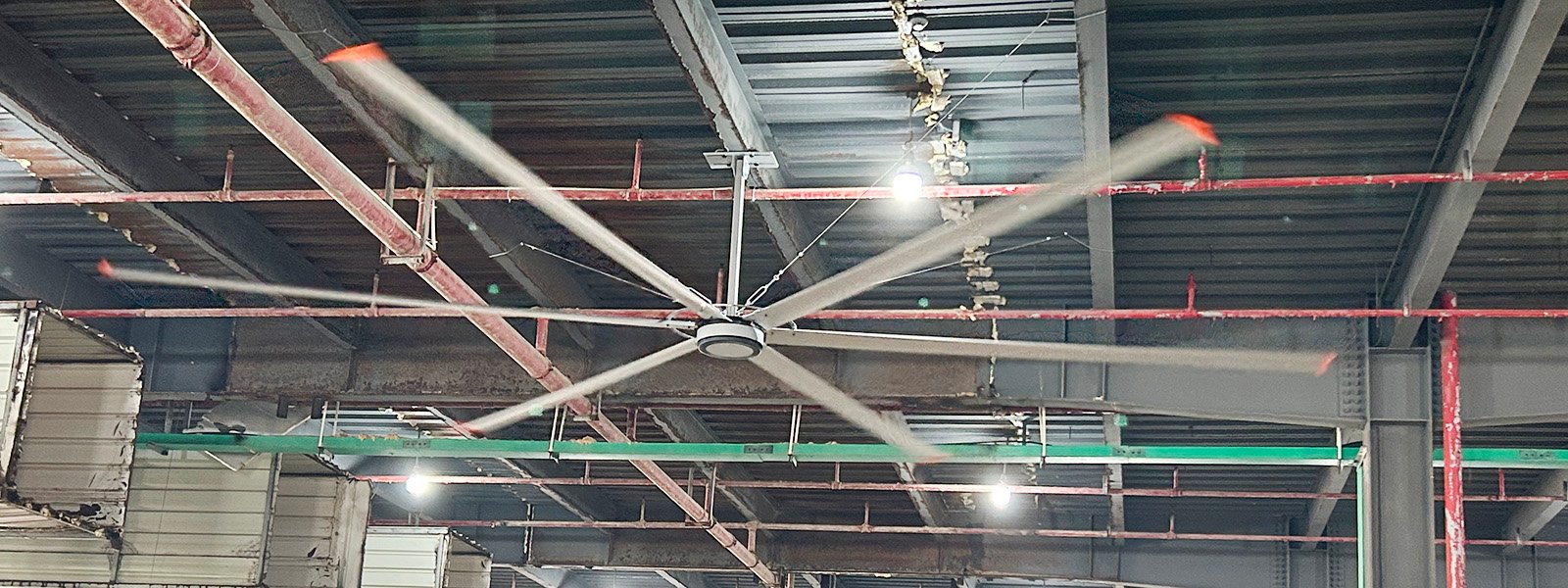
The speed of the HVLS PMSM ceiling fan is an important parameter that directly affects the efficiency and performance of the fan. This type of fan is usually driven by a Permanent Magnet Synchronous Motor (PMSM), which is favored for its high efficiency and energy-saving characteristics.
The importance of rotational speed:
Air flow efficiency: The speed determines the ability of the fan to generate airflow. The higher the speed, the more air the fan can move per unit of time, providing stronger cooling effects. However, this does not mean that higher speeds are better, as excessively high speeds may lead to increased noise and energy consumption.
Energy consumption: PMSM motors can achieve the best energy efficiency ratio when operated at appropriate speeds. By precisely controlling the speed, energy consumption can be reduced while meeting cooling needs, achieving energy conservation and emission reduction.
Noise and lifespan: The speed is closely related to the noise level and lifespan of the fan. Generally speaking, the lower the rotational speed, the lower the noise, and the slower the wear of the motor, thereby extending the service life of the equipment.
Method of controlling speed:
Variable frequency speed regulation: By using a frequency converter to change the power supply frequency of the motor, the speed of the PMSM can be adjusted. This method can precisely control the speed of the fan to meet the air flow requirements under different environments and conditions.
Electronic control system: Use a microprocessor or dedicated electronic control board to manage the speed of the motor. This method can achieve automated control by automatically adjusting the fan speed based on environmental temperature, humidity, or other parameters.
Summary:
The speed of the HVLS PMSM ceiling fan is a key performance indicator that needs to find a balance between providing sufficient cooling and maintaining energy efficiency. By adopting advanced control technologies such as variable frequency speed regulation and electronic control systems, the operating efficiency of fans can be optimized, energy consumption can be reduced, noise can be reduced, and equipment life can be extended. Correct speed setting and adjustment are crucial for achieving optimal fan performance.
